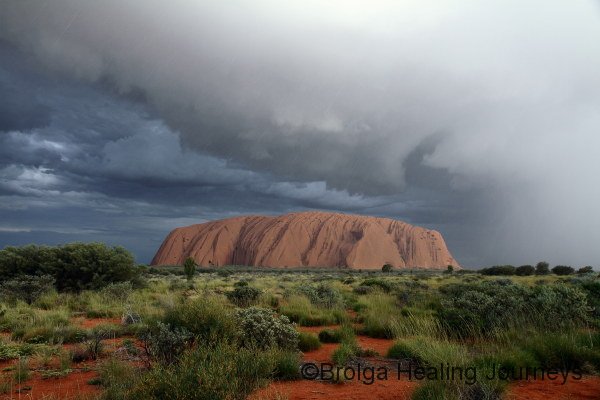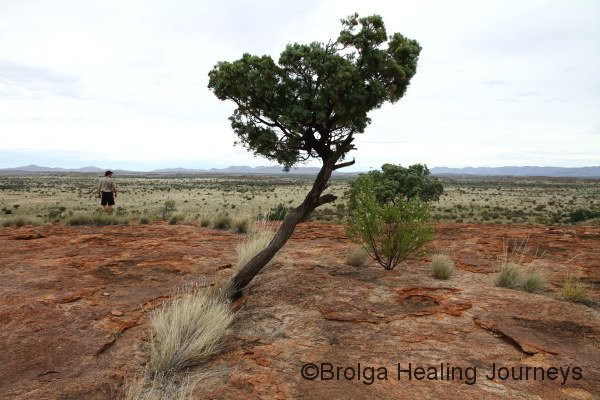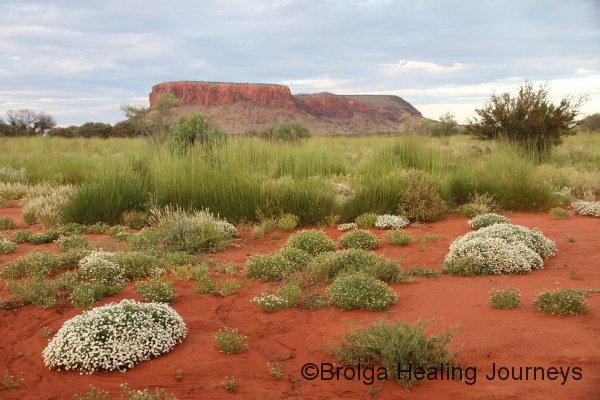Rain on Uluru – a Dream Come True

We’ll always remember the 4th of December 2010. It rained on and off overnight, quite heavily around dawn. We were woken by loud thunderclaps, and we were quietly excited that this might be the day – we might finally see rain on Uluru. By the time we got up the rain had all but ceased, so our first job was to make sure our campsite was secure, and not flooded, as there was a fair bit of run-off coming through the campground. As soon as we could, we raced up to the nearby lookout to check out Uluru, but were disappointed to see that the rain had cleared over her. Damn!

